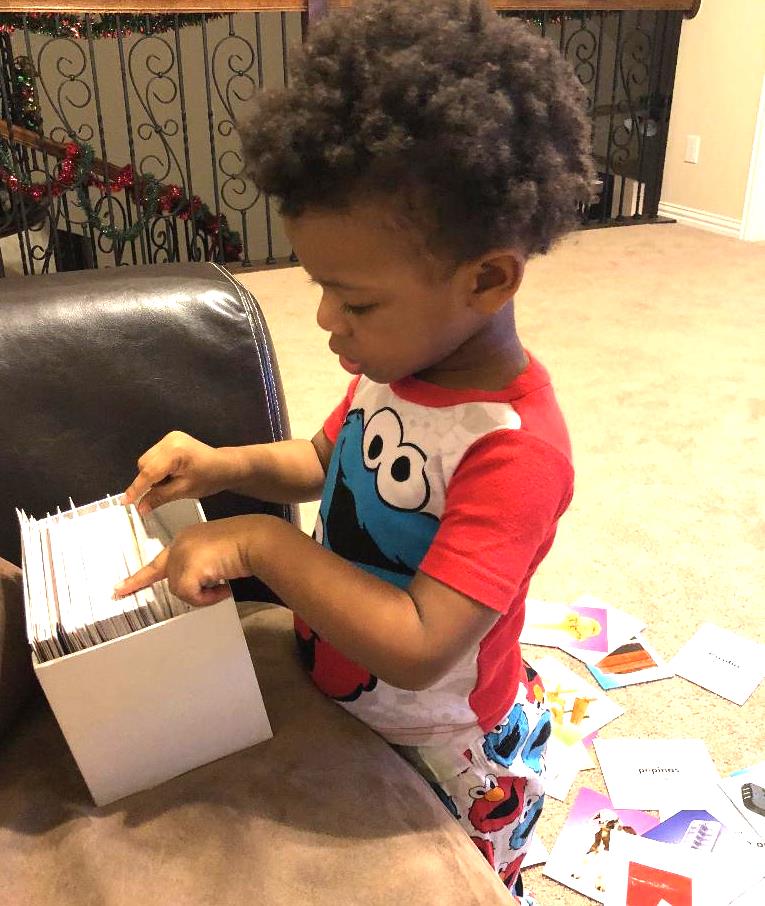Marcella Savala-Hamilton is my mom and a former Bilingual Education Specialist with Dallas Independent School District. I wanted to interview her to be able to give tips on how non-bilingual parents can incorporate Spanish, or any other language, at home. Living in Texas and being half Hispanic, it is very important to me for my son to learn Spanish. I hope all moms find this helpful and feel inspired to teach their child another language after reading.
Q: Mom, please introduce yourself and give a little background into your qualifications and skills as a bilingual educator.
Marcella: Growing up in Dallas, Texas, early in my childhood, I knew that I wanted to be an educator. My prayers were answered, and my dream became a reality. Numerous post-high school education scholarships began in community college followed by scholarships to obtain a Bachelor’s in education, and a Master’s in bilingual education and a second in education administration. These led to a career in education as an elementary bilingual classroom teacher, a dual-language specialist and school administrator. I recently retired to care for and “home-school” my grandchild, providing instruction in Spanish and English. Each day implementing my knowledge as a dual language educator with a then 12-week-old to a present day 2 1/2 year old.
Q: How is language acquired?
Marcella: Language is acquired and developed when it is meaningful and engaging for the learner. This is true when acquiring the mother/native language, L1, as well as when acquiring the target/second language, L2. There are numerous instructional strategies and materials that can be utilized for second language acquisition and that will assist with the development of bilingualism, biliteracy and biculturalism. Many of the dual language strategies and materials used in dual-language classrooms can be modified to be used in the learner’s home. All new concepts should be introduced in L1 then transferred to the L2.
When developing dual language at home, it is very important to accept the learner’s use of language choice as the adult models the use of the language of instruction. For example, if the adult is targeting the L1 and the learner responds in L2, the adult continues modeling and immersing the learner in the L1. The same is so with the development of the L2, the adult models the L2 and the learner can respond in the language of choice. Think of a 4, 5 or 6 month old that babbles after the adult emphasizes a word for the object ball. If the infant replies /b/b/b/, the adult continues to model saying “ball” in addition to providing meaningful activities with the ball.
Always consider supporting language acquisition with activities and materials that expose the learner to real life experiences: relevant, age appropriate, developmentally appropriate, purposeful and fun. Refrain from mixing the languages and model respect for the languages and their cultures. When teaching an activity in the L2, refrain from mixing in the native language for clarification, elaboration, or translation as the learner will become dependent on this and will be unsuccessful in acquiring the target language.

Q: What are some ways that moms can incorporate the second language at home?
Marcella: Consider using some of the following for language acquisition:
1. Flashcards
The use of flash cards for language development may or may not be appropriate for the learner depending on the age and how they are utilized. I recommend using flash cards that have photographs rather than illustrations. Also, match the cards to real objects in the home. Use cards 4×6 inches or larger and that can be easily manipulated. Flash cards can easily be used to label objects in the home in the L1 and L2. When using flash cards ensure that the text is supported by a visual.
2. Books/Tapes
Books are a great way to make language acquisition meaningful. Learners love books especially if they are accompanied by audio. Books are available in many languages. Purchasing books can become expensive so consider utilizing ebooks or visiting your public library. Many neighborhood libraries offer story time in various languages. Don’t shy away from re-reading a book. When re-reading a book, focus on a different comprehension skill, concept, or vocabulary word. Be cognizant of books that are available in two languages. Sometimes the translation of a book is literal and loses some of the meaning. Look for authentic books in the target language.
3. Words
Word labels can be used in the home for L1 and L2 acquisition. When making bilingual labels, select one color for the L1 and a different color for the L2. Remain consistent with the two colors of the languages and eventually the learner will begin to connect the color with the language it represents. Begin by labeling things that are important to the learner. For example: door, chair, etc. Play word games such as, clapping the words, clapping the syllables of words, rhyming words, and making silly words. Adults can physically model words or model the sounds of words to assist with language acquisition. For example: physically shrink down to model the words “down/abajo,” put your hands on your “head/cabeza,” etc. Also, add intonation.
4. Music
Music and movement are fun ways to acquire language. Music can be obtained from the internet, internet videos, CDs, DVDs child-size musical instruments, finger games and songs, as well as made up songs. Many young children’s classic and favorite songs are now available in Spanish. Artists, such as José Luis Orozco, Dr. Jean, and Little Baby Bum en español on YouTube, have a good collection of Spanish music that will assist with language acquisition.
5. A Class
A classroom offers the learner with opportunities to immerse in the L2. The learner can engage in utilizing vocabulary in a meaningful way thus, taking ownership of the target vocabulary. The learner acquires the L2 in a natural way which is more successful than with rote activities. Immersion in a Spanish classroom for example, extends beyond the student speaking and understanding the language; the student develops cognitive skills, social skills, academic skills and cultural skills.
I hope everyone has gained some insight into this wonderful, amazing process. I know I am blessed to have my mother teach my son Spanish and English. Please feel free to reach out if you need any more tips on Bilingual Education.













